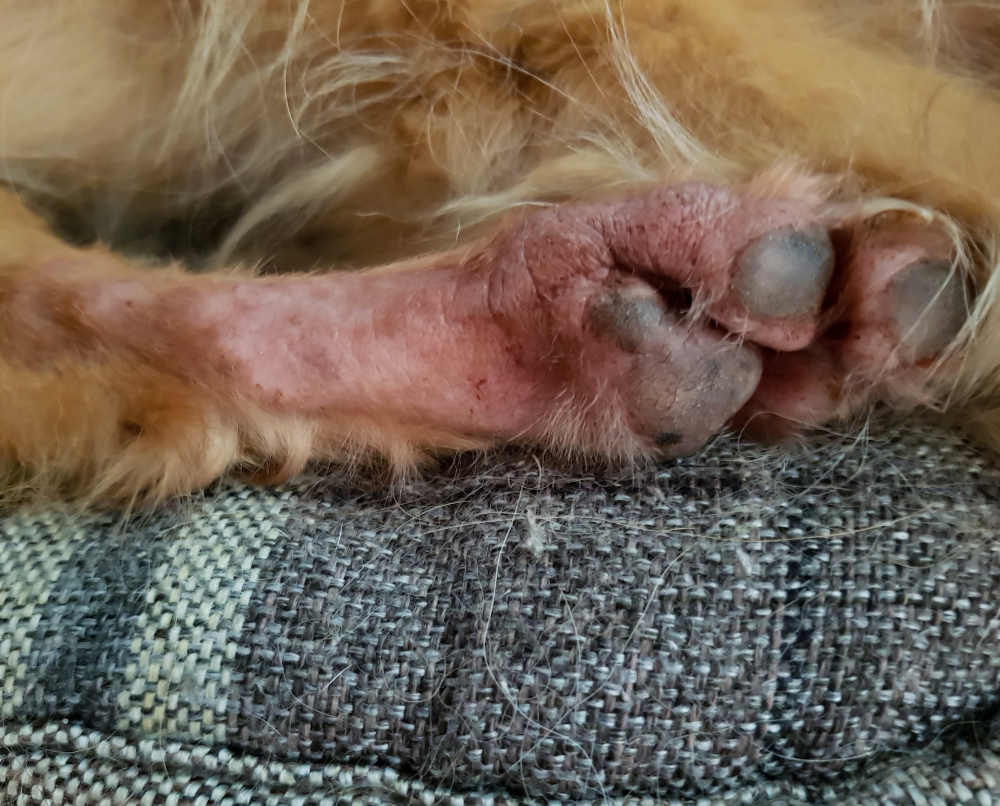Signs of Paw Pad Issues and Injuries in Dogs
Causes of Paw Infections
Like any other kind of infection, paw infections are preceded by the entrance of bacteria’s, viruses, fungi, or other foreign bodies into the tissue of the paw through an injury. Whether the paw injury is a tiny puncture from a thorn or a sore from walking on a hot surface, there’s always an opportunity for an infection to take hold no matter the size of the injury.
It’s important to note that infections can also be caused by less obvious things– like allergies. If your dog’s allergies cause them to constantly lick their paws, they can wear down the tissue and cause sore spots that are vulnerable to infection. The same can happen from complications due to flea infestations.
Breeds of dogs with less padding on their paws or slimmer limbs– such as the Greyhounds –are more likely to develop paw problems than others. And dogs with compromised immune systems or other health conditions and medications affecting immune systems are also more susceptible.
Allergic Pododermatitis (Dog Paw Inflammation)

Allergic pododermatitis is a common cause of paw inflammation in dogs. Affected dogs develop redness and swelling between the toes and all over the paw. In many cases, the paws are damp due to licking and chewing. Allergic dermatitis often affects all four paws, although it’s possible to only have one or two paws affected. Allergies can usually be managed with medication, but they are never fully cured. Your dog will likely require lifelong treatment with oral, injectable, or topical allergy medications, as well as lifestyle changes to reduce their exposure to allergens. If you suspect that your dog may have allergic pododermatitis, seek veterinary care to discuss an appropriate treatment plan and rule out secondary infections. The costs associated with treating allergic dermatitis depend on the severity of your dog’s allergies, the presence of secondary infections, and how well your dog responds to medications.
How To Treat An Infected Paw on Dog?
Although paw infections are quite common, many owners don’t give much attention to their dog’s feet. Even a cut during a walk can end up in an infected paw if it is not treated properly. Therefore, it’s extremely important to take proper care of your dog’s paw to keep your pup healthy. Keep reading to know the causes, symptoms, and treatments for your dog’s infected paw.